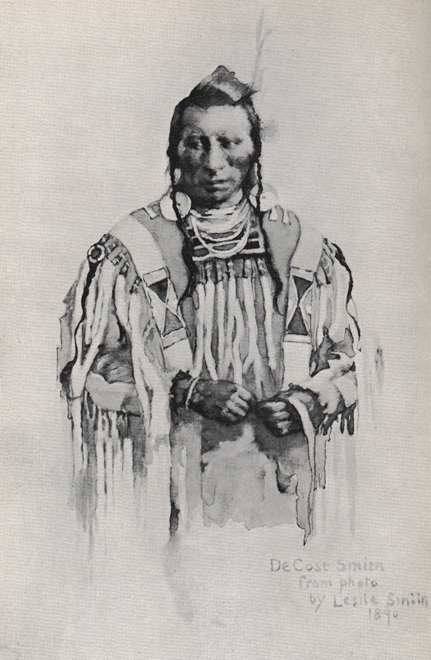
In Red Indian Experiences, DeCost Smith wrote about Onondaga Indians coming to his boyhood home on what is now West Lake Street. (The Smith home is in the center of the photo above, taken circa 1850, seen across the fields from the west.)
“…in the late eighteen-sixties, I saw my first Indians, Old Cynthia and Dji-ga-na-yo’-za, Onondaga women from the Castle, eighteen miles away, who came to the kitchen door in those fine days of autumn or early spring to sell their fancy baskets, beaded wall pockets, and pincushions; coarse beads coarsely worked over paper designs on black velvet, but to me, in those days, very Indian. It was one of those exciting events of childhood which left an impression more vivid with me than the periodic visit of the tin peddler, or the rarer organ grinder and his monkey–Cynthia with her cherubic face and gray hair, Dji-ga-na-yo’-za, younger, with her large pack basket and its burden strap, the leggings of both women showing below their calico skirts.
“Once, when I was too young to remember, the younger woman had brought her small infant swaddled in its wrappings on a papoose board, with the thin, flat bow of hickory from which hung a silk handkerchief to shield the baby’s eyes from the sun. Next year she came without the baby, and when my father asked, ‘Where is the papoose?’ he received the laconic, but tearful answer, ‘Pig eat ’em.’ It seems that on one of her basket-peddling expeditions the mother had gone into a farmhouse near Oneida, leaving the baby on its board leaning against a tree, where some pigs found it and tore it to pieces.”
* * *
“The Castle” was the name for the Onondaga Reservation during DeCost Smith’s youth; it is today the present site of Nedrow.



